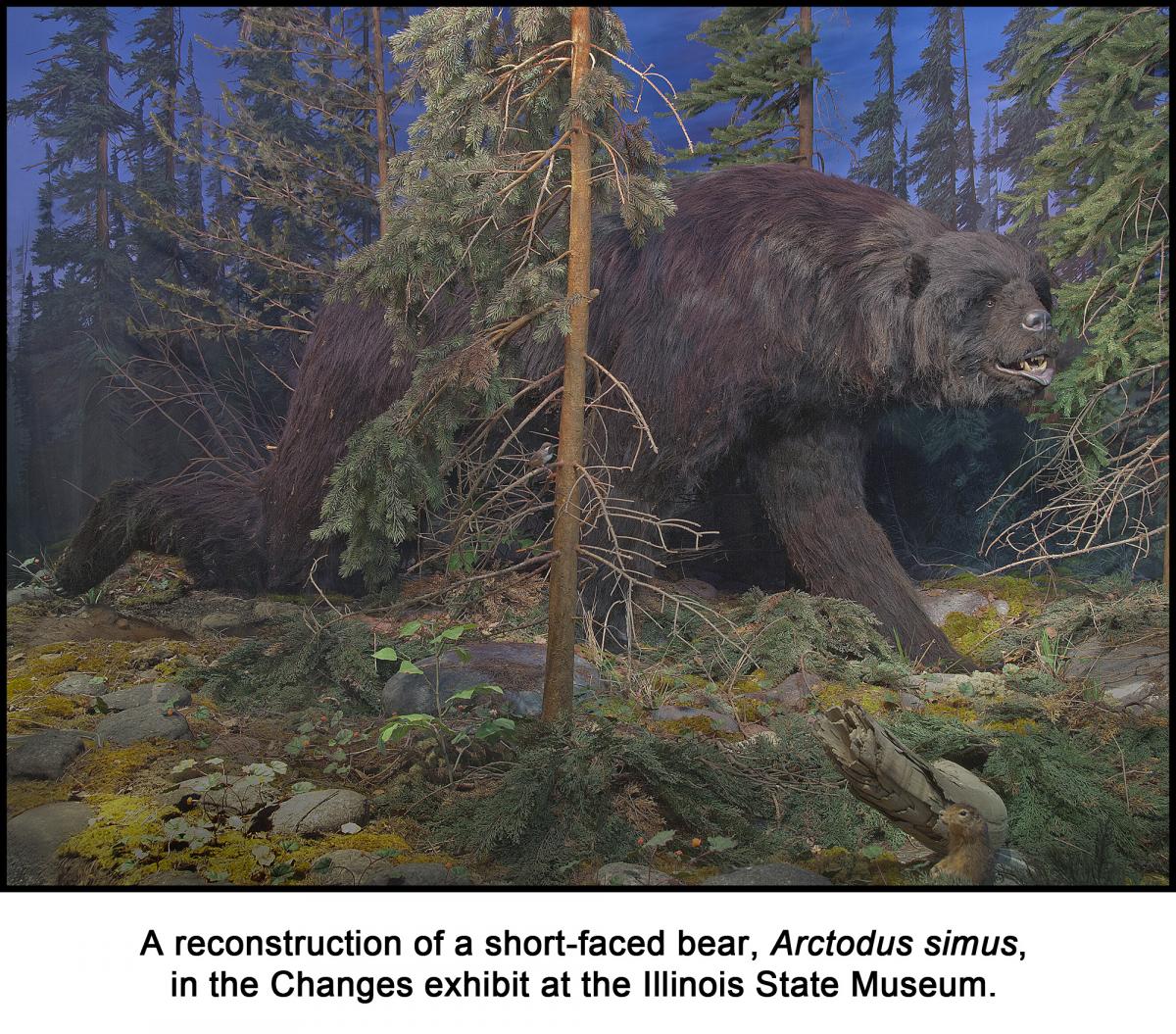Short-faced Bear
Short-faced bear, Arctodus simus
The giant short-faced bear, Arctodus simus, was an extremely large bear that occupied much of North America throughout the Pleistocene. It is often described as the largest Pleistocene land carnivore in North America, although several new studies suggest that this member of the Carnivora family may actually have been an omnivore (Figuerido et al. 2010; Meloro 2011; Sorkin 2006). As with most other large mammals in North America, the short-faced bear went extinct at the end of the Pleistocene. The giant short-faced bear has been subdivided into two subspecies, A. simus yukonensis and A. simus simus, based on extreme differences in body size (Kurten 1967). It has been postulated that the larger subspecies, A. simus yukonensis, was restricted to the northwest portion of the species' range - specifically, Beringia, western Canada and the northwestern U.S. However, as more larger-bodied individuals have been recovered from locations in the southern portion of the giant short-faced bear's range, it has been suggested that the observed variation in body size may be due in part to extreme sexual dimorphism in the species (Schubert 2010). In some locations, males may have weighed almost twice as much as females.
Reconstructed short-faced bear, Arctodus simus, skeleton on display at the Indiana State Museum, Indianapolis.
Height: 1.5 m (5 ft) at shoulder; 3.35 m (11 ft) when standing on hind legs
Weight: Average: 700-800 kg (1540-1760 lbs); Christiansen 1999
Females: 300-400 kg (660-880 lbs); Figuerido et al. 2010
Males: 800-1000 kg (1760-2200 lbs); Figuerido et al. 2010




